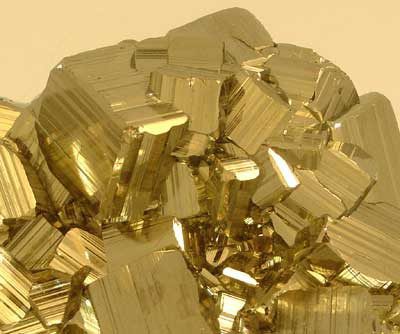Pyrite, those flecks of shining 'gold' you see in river gravel, might not be as worthless as once believed.
Clean, cheap energy. Bring it on. Just don't tell the petrochem baddies!
Corvallis, Oregon. – Pyrite, better known as "fool's gold," was familiar to the ancient Romans and has fooled prospectors for centuries – but has now helped researchers at Oregon State University discover related compounds that offer new, cheap and promising options for solar energy.
These new compounds, unlike some solar cell materials made from rare, expensive or toxic elements, would be benign and could be processed from some of the most abundant elements on Earth. Findings on them have been published in Advanced Energy Materials, a professional journal.
"We've known for a long time that pyrite was interesting for its solar properties, but that it didn't actually work," said Douglas Keszler, a professor of chemistry at OSU. "We didn't really know why, so we decided to take another look at it. In this process we've discovered some different materials that are similar to pyrite, with most of the advantages but none of the problems.

"There's still work to do in integrating these materials into actual solar cells," Keszler said. "But fundamentally, it's very promising."
Pyrite was of interest early in the solar energy era because it had an enormous capacity to absorb solar energy, was abundant, and could be used in layers 2,000 times thinner than some of its competitors, such as silicon. However, it didn't effectively convert the solar energy into electricity.
In the new study, the researchers found out why. In the process of creating solar cells, which takes a substantial amount of heat, pyrite starts to decompose and forms products that prevent the creation of electricity. Based on their new understanding of exactly what the problem was, the research team then sought and found compounds that had the same capabilities of pyrite but didn't decompose. One of them was iron silicon sulfide.
"Iron is about the cheapest element in the world to extract from nature, silicon is second, and sulfur is virtually free," Keszler said. "These compounds would be stable, safe, and would not decompose."
"The beauty of a material such as this is that it is abundant, would not cost much and might be able to produce high-efficiency solar cells," Keszler said. "That's just what we need for more broad use of solar energy."
Source: Oregon State University

The aim of art is to represent not the outward appearance of things, but their inward significance. – Aristotle















